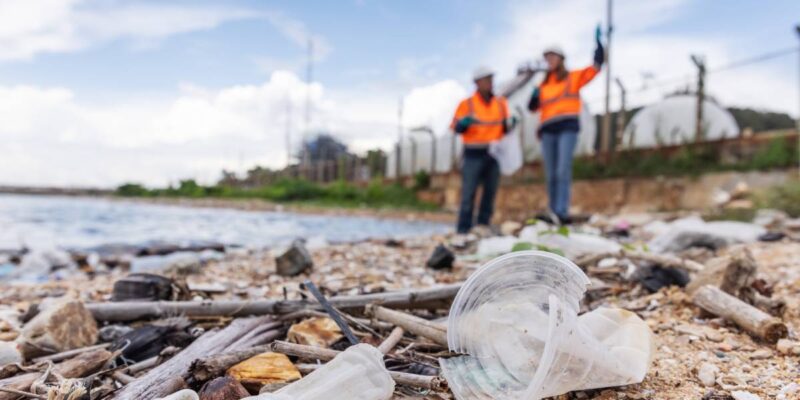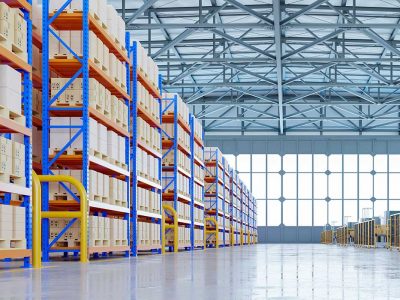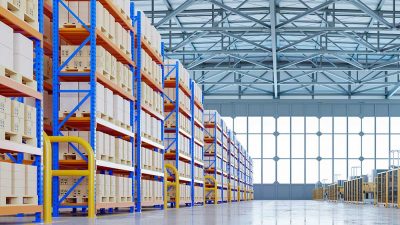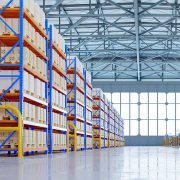Plastic pollution has become one of the most pressing environmental challenges of the 21st century. Every year, millions of tons of plastic waste end up in rivers, oceans, and on land, harming wildlife, contaminating food chains, and even entering the human body as microplastics. What was once celebrated as a revolutionary material, light, durable, and cheap, has now turned into a global threat. From plastic bags drifting through city streets to floating islands of waste in the Pacific Ocean, the evidence of our dependence on plastic is everywhere. Understanding the causes of plastic pollution, why it has grown so rapidly, and what can be done to stop it is essential if we are to protect the planet for future generations.
What causes plastic pollution?
At its core, plastic pollution occurs when plastic materials enter and persist in the natural environment rather than being properly reused, recycled, or safely disposed of. Several interrelated factors drive this phenomenon:
1. The nature of plastics.
Plastics are synthetic polymers designed to be strong, light, and durable. These qualities make them incredibly useful in modern life, from packaging and electronics to medicine and construction, but also mean they are highly resistant to natural degradation. Instead of breaking down completely, plastics fragment into smaller particles known as microplastics, which persist in ecosystems for hundreds of years.
2. High production volumes and linear design.
The global economy largely treats plastic as a cheap, disposable material. Many plastic products are designed for a single short use, such as packaging or straws, and are then discarded. This “take-make-dispose” model creates massive quantities of waste with little thought given to reuse or recycling.
3. Inadequate waste management systems.
In many countries, especially in developing regions, waste collection and recycling infrastructure cannot keep pace with growing consumption. When waste systems fail, plastics leak into rivers, drains, and coastlines, eventually reaching the ocean.
4. Consumer behavior and convenience culture.
Modern lifestyles emphasize convenience, and plastics make that possible: bottled water, takeaway food containers, disposable cutlery, and shopping bags are all designed for single use. The affordability and availability of such products reinforce habits of overconsumption.
5. Industrial and accidental losses.
Plastic pellets used in manufacturing often escape during transport and production. Fishing gear, such as nets and lines, frequently becomes lost at sea, adding to marine debris. Littering and illegal dumping also contribute significantly.
6. Global trade and unequal disposal.
Large amounts of plastic waste are exported from high-income countries to lower-income ones for recycling or disposal. When receiving nations lack the proper facilities, much of this waste ends up mismanaged or openly dumped, worsening local pollution.
Why has plastic pollution increased?
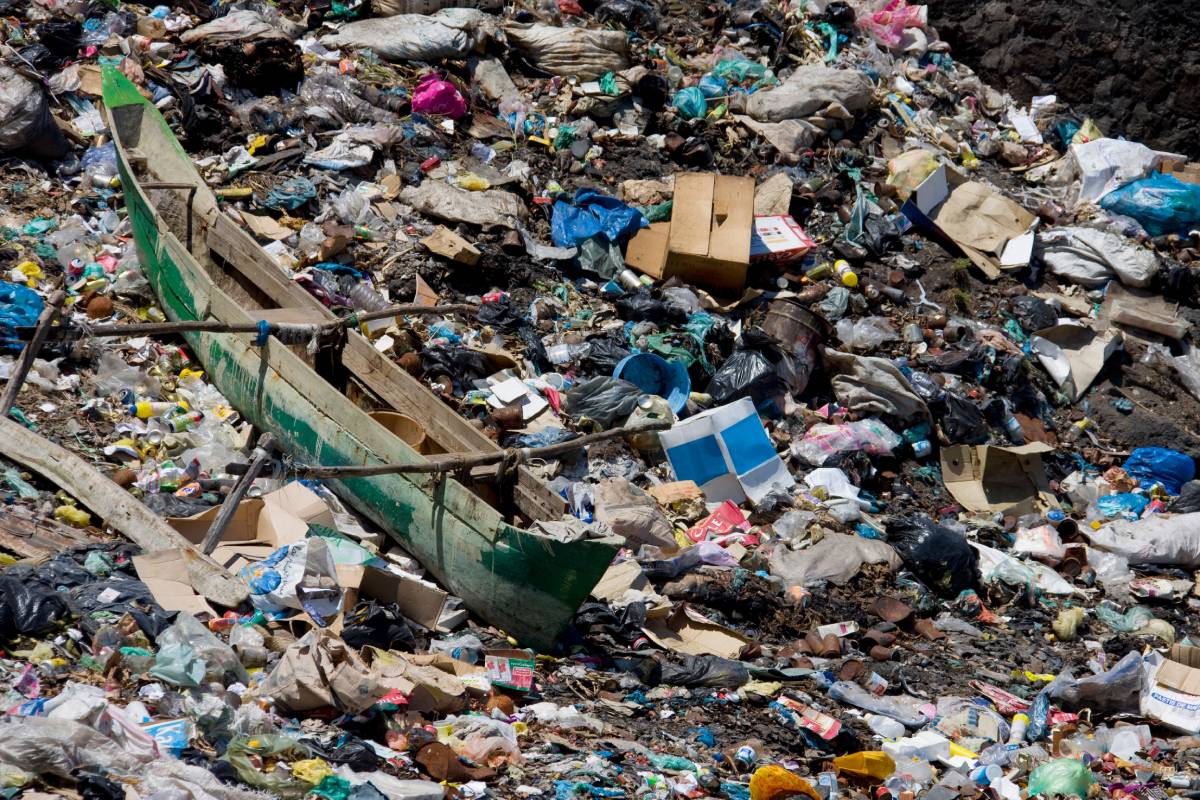
Plastic pollution has expanded rapidly in recent decades due to several compounding factors:
1. Explosive growth in plastic production.
Since the 1950s, global plastic production has risen from less than two million tons per year to over 400 million tons annually today, and it continues to climb. As populations and economies grow, so does the demand for packaging, consumer goods, and construction materials made of plastic.
2. Proliferation of single-use plastics.
The most polluting items, plastic bags, wrappers, bottles, and straws, are designed for single use. The growth of e-commerce, food delivery, and convenience culture has greatly increased the use of disposable packaging. During the COVID-19 pandemic, the global surge in single-use medical masks and gloves further worsened the problem.
3. Low cost and industrial incentives.
Because most plastics are made from fossil fuels, especially oil and gas, their production costs are tied to the price of these raw materials. When oil prices are low, producing virgin plastic is cheaper than recycling old plastic, discouraging the development of recycling industries.
4. Poor recycling rates.
Globally, only about 9% of all plastic waste ever produced has been recycled. Most plastics are either landfilled, incinerated, or leak into the environment. Technical difficulties such as mixed materials, contamination, and limited markets for recycled products make recycling economically uncompetitive.
5. Weak global regulation.
Although many countries have introduced bans or taxes on certain single-use plastics, there is no binding international treaty covering the entire plastic life cycle. Uneven regulations allow pollution to shift geographically rather than decline overall.
6. Cumulative persistence.
Even if plastic production stopped today, existing plastics would remain in ecosystems for generations. Each year’s waste adds to this growing legacy, creating a visible and invisible buildup across the planet.
How Can We Solve the Plastic Pollution Crisis?
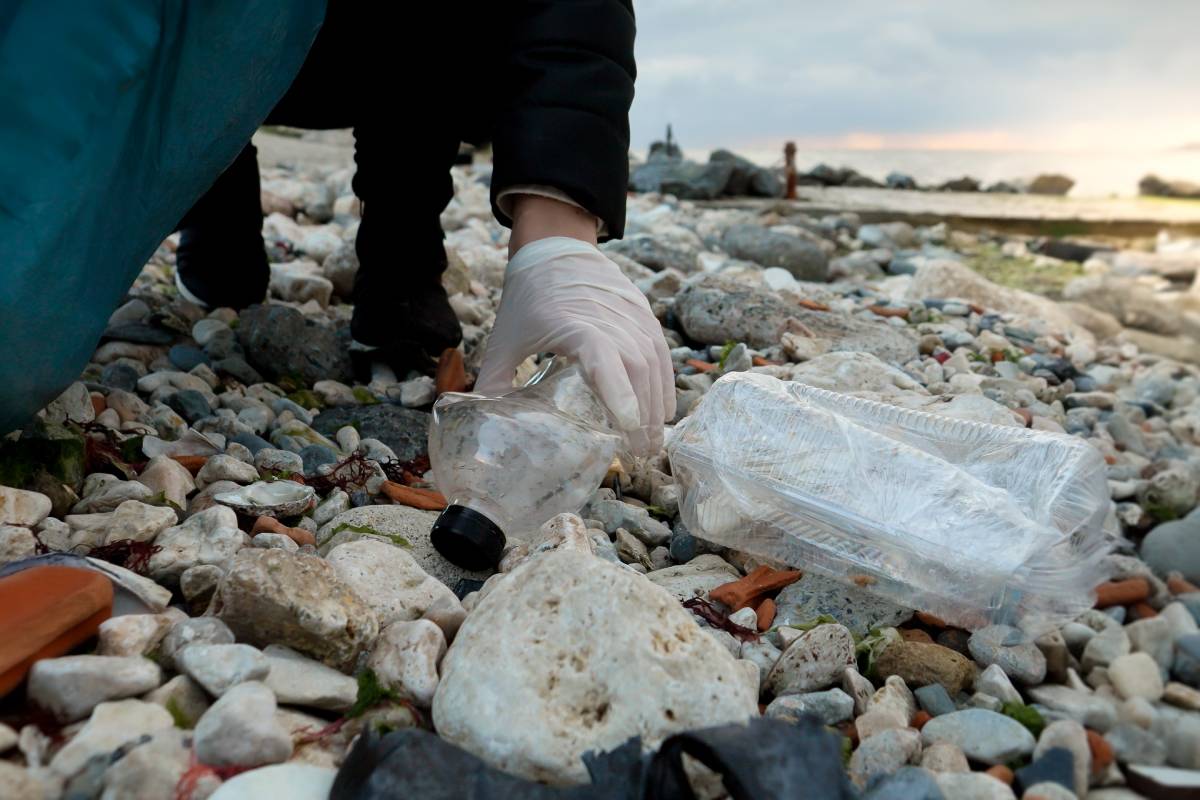
Addressing the plastic pollution crisis requires a comprehensive and cooperative approach that targets every stage of the plastic life cycle, from design and production to consumption and disposal. The problem is complex, but the solutions are within reach if governments, industries, and individuals act together.
1. Redesign products and packaging
The first and most effective step is prevention, reducing the amount of plastic produced in the first place.
- Design for reuse and durability. Replacing single-use items with reusable and refillable alternatives, such as stainless-steel water bottles or refillable detergent containers, dramatically reduces waste generation.
- Design for recyclability. Products should use fewer mixed materials and clearer labeling so that recycling facilities can handle them efficiently.
- Eliminate unnecessary packaging. Companies can use minimalist packaging or switch to materials that have established recycling systems, like paper or glass.
2. Implement strong policies and economic incentives
Governments play a key role in setting rules and creating incentives that make sustainable choices easier and cheaper.
- Ban or restrict single-use plastics. Many countries have already banned lightweight plastic bags and polystyrene foam food containers. These targeted bans can yield quick results.
- Extended Producer Responsibility (EPR). Producers should be made responsible for the collection, recycling, or disposal of the plastics they put on the market. This motivates companies to design products that are easier to recover and reuse.
- Deposit-return systems and taxes. Refundable deposits on bottles and cans greatly increase collection rates. Similarly, taxes on virgin plastic or single-use packaging make recycled or reusable options more competitive.
- Public procurement standards. Governments can lead by example by purchasing products with recycled content and avoiding single-use plastics in public institutions.
3. Build and modernize waste management infrastructure
Even with better design and policy, effective waste management is essential.
- Expand collection systems. Reliable waste collection prevents plastic from leaking into nature. Investment in municipal and community-based systems is crucial, particularly in developing regions.
- Upgrade recycling facilities. Modern sorting technologies and better collection practices increase recycling efficiency and reduce contamination.
- Ensure safe disposal for unrecyclable plastics. Controlled landfills or waste-to-energy plants, though imperfect, are preferable to open dumping or burning.
- Support informal waste workers. In many countries, informal collectors recover large amounts of plastic waste. Formal recognition, fair pay, and safety protections improve both livelihoods and environmental outcomes.
4. Corporate responsibility and innovation
The private sector can significantly accelerate change by rethinking business models.
- Set measurable reduction goals. Companies should commit to reducing virgin plastic use, increasing recycled content, and reporting progress transparently.
- Adopt circular business models. Refill stations, packaging take-back systems, and product-as-a-service models (where customers lease rather than own items) reduce single-use demand.
- Invest in material innovation. Research into sustainable packaging alternatives, such as biodegradable or compostable materials, must be coupled with proper testing to ensure real environmental benefits.
5. Encourage behavior change and education
Public awareness and participation are vital for lasting success.
- Make sustainable choices accessible. Governments and retailers should make it easy and affordable to choose reusable products and refill options.
- Promote education and awareness. Schools, community programs, and media campaigns can teach the environmental impacts of plastics and proper waste disposal methods.
- Encourage citizen participation. Clean-up drives, recycling initiatives, and local advocacy can build community ownership of the issue.
6. Invest in science and monitoring
Knowledge is the foundation of effective action.
- Track plastic flows and hotspots. Mapping where and how plastic leaks into the environment allows targeted intervention.
- Study health and ecological impacts. Understanding how microplastics affect human health and wildlife helps justify stronger policy measures.
- Support technological innovation. Advanced recycling techniques, ocean clean-up systems, and biodegradable alternatives all need funding and rigorous testing.
What success could look like
If these measures are implemented collectively, we could dramatically reduce plastic leakage within a generation. Imagine a world where most packaging is reusable or fully recyclable, where every household has reliable waste collection, and where businesses profit from circular systems rather than disposability. Countries such as Germany and South Korea already demonstrate high recycling rates through strong regulations and public participation, proving that systemic change is possible.
Success does not mean eliminating all plastics; some uses, such as medical equipment, are essential, but rather eliminating plastic waste. By redesigning materials, rethinking consumption, and revaluing waste as a resource, humanity can shift from a linear to a circular plastic economy.
Conclusion
Plastic pollution grew because a useful material was adopted into a global system built on cheap, disposable consumption and inadequate waste management. Stopping it requires systemic change at every level: innovation in design, strong regulation, corporate accountability, improved infrastructure, and public participation. The crisis is man-made, but so is the solution.
If governments, businesses, and individuals unite under a shared goal to reduce, reuse, and redesign, we can solve the plastic pollution crisis and preserve the health of our planet for future generations.

